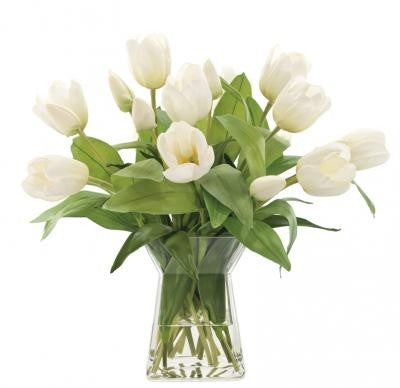THE ART OF E-DESIGNA new way to work, virtual consultations are becoming increasingly popular with the interior design community

As design advice and designer resources become more accessible, a number of interior designers are beginning to tailor some of their services for the Internet age. In addition to traditional full-service interior design, they offer quick hits of design advice, often setting the design framework for just a single room, for a get fee. In most cases, designers don’t even need to visit the room in question—clients share photos, measurements, and inspirational images over the web, and all the work is completed via telephone and e-mail. Whether you call it e-design, remote design, or virtual design, these services typically engage a new type of design-savvy client who wouldn't otherwise have the resources to work with a professional. We recently spoke with three designers who have launched such services—Little Rock’s Tobi Fairley, who runs InBox Interiors; New York’s Hilary Unger, who runs Buy My Eye; and Malibu’s Nicole Sassaman, who runs Design In A Box—to get the inside scoop.
New client base
All three designers agreed that their flat fee, e-design services tend to attract a different type of client than their regular, full-service design practices. Fairley started InBox Interiors “to offer a different tier of service for people who loved my look, but weren't ready for the full service, luxury, all-inclusive design that we do,” she says. “That includes friends and people who follow me on my blog.”
For Sassaman, launching Design In A Box was a way to manage the influx of inquiries from people who had seen her published work. “I was probably getting 20 e-mails a day from people asking where to get this handle or that paint color,” she says. “I was able to respond for a while, but then it got out of control. I couldn't keep up with it anymore. But I also thought there must be a way to make money from it.”
Unger started Buy My Eye seven years ago, after an acquaintance purchased a few hours of her time as a gift consultation for a friend. She began by selling flat-fee, multi-hour design consultations, and later moved into remote, web-based design. “Whether it’s on site or off site, I give the same personalized service,” she says. “It’s great for building a client base. Sometimes they say, ‘Hey, this is perfect, and I want you to execute what you've suggested.’” At that point, it becomes a full-service project, handled by Unger’s interior design firm, Perianth.
How it works
Although different designers offer different levels of services, most e-design projects focus on a single room, and require clients to submit their own photos, room measurements, and inspirational images, as well as respond to a questionnaire.
“One of the most important things is that we have them send us concept or inspiration images of things that they absolutely love,” says Fairley. “They also submit a budget range, so that we can be sensitive to that. We take the same care with the process that we do with our higher-end clients.”
Managing communications is also key to keep the workload within reason. Fairley and her team work from the materials submitted by the client and aim to communicate primarily through e-mail, but will make quick phone calls from time to time, if necessary. Unger begins her process with a 30-minute telephone consultation, and then works independently, but will use e-mail and telephone to check in with clients periodically. Sassaman also starts with a phone consultation once all materials have been received, but charges an additional fee if the client desires further telephone time once the process is underway.
Typically in about four to eight weeks, e-design services can provide a comprehensive design concept for a room, including images, a floor plan, furniture selection, samples of suggested materials and finishes, and shopping lists for accessories.
Pricing
For budget-conscious clients, one of the appeals of e-design services is a transparent, a-la-carte pricing. InBox Interiors charges a flat fee for the complete design of a room—from $900 for a powder room up to $2,100 for a kitchen. Design In A Box charges a flat fee based on size—from $950 for a room that is 100 square feet or less, up to $2,500 for a room that is 500 to 1,000 square feet.
Buy My Eye breaks its fees down even further. Furniture plans alone range from $400 to $520, based on room size. Furniture selection costs an additional $400 to $520. Selection of paint colors and finishes costs $200. Advice on the placement of artwork and accessories also costs $200. Clients are free to choose whichever components they desire.
For all three designers, e-design services have become a valuable, and enjoyable, sideline to their primary businesses. “The difference is very clear—it’s either on-the-spot advice for a flat fee, or a full service interior design offering customized service,” says Unger. Regardless, the response to Buy My Eye has been so good, that “it’s become a very key part of my business.”
P.S. If your pockets are coming up short these days as most will tell you theirs are, I have a solution that will help you get the look you need for less.






No comments:
Post a Comment